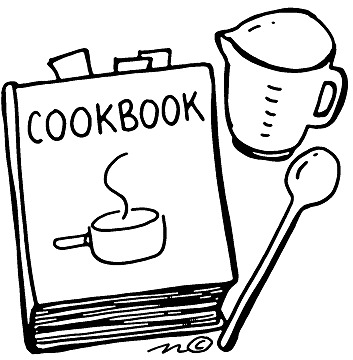- Author:
- Paige
- Subject:
- Professional Learning
- Material Type:
- Activity/Lab, Student Guide, Unit of Study
- Level:
- High School
- Tags:
- License:
- Creative Commons Attribution Non-Commercial
- Language:
- English
- Media Formats:
- Text/HTML
Applied Math and Culinary Arts Grading Rubric
Culinary Measurements
Math Packet
Reading and Writing Recipe
Recipe Yield Lab
Standardized Recipes
Strand 6 Student Outline
Culinary Math

Overview
Utah Culinary 2 Strands and Standards
Summary
Below are the Cuilnary 2 Utah strands and standards that align with this lesson plan. It also outlines what students should learn in this lesson.
Students will utilize basic culinary math concepts.
Standard 1: Practice proper measuring techniques using appropriate tools.
- Volume and weight are the two standard methods of measuring food. Weight is the most accurate.
- Volume measuring tools include teaspoons, tablespoons, cups, pints, quarts, gallons, and various sizes of ladles and scoops.
- Weight measuring tools include balance/baker scales, spring scale, and digital scale.
Standard 2: Identify measurement equivalents and apply by adjusting recipe yield.
- Identify measurement equivalents used in food preparation including, but not limited to:
- 3 t. = 1 T.
- 16 T. = 1 c.
- 2 c. = 1 pt.
- 4 qt. = 1 gal.
- 8 fl. oz. = 1 c.
- 4 c. = 1 qt.
- 1 lb. butter = 2 c.
- 16 oz. = 1 lb.
Standard 3: Define a standardized recipe and identify components of a standardized recipe.
- Standardized recipe - A recipe that produces the same results and yield every time when the exact procedures are followed.
- Components of a recipe.
- Title (name of the recipe)
- Yield - how many servings the recipe will make.
- List of ingredients and amounts, listed in order they appear in the recipe.
- Step by step directions in order to be completed.
- Equipment - container size and type.
- Temperature and time
- Components of a recipe.
- Identify the importance/benefits of standardized recipes to a foodservice operation.
- Customer Satisfaction
- Consistent nutrient content
- Food cost control
Standard 4: Correctly convert recipe yields.
- Formula for recipe conversion
- Divide the new yield by the old yield to get the conversion factor:
- New Yield ÷ Old Yield = Conversion factor
- Multiply every recipe ingredient by the conversion factor to get the new quantity needed for the new yield:
- Old ingredient quantity x Conversion factor = New quantity
- Divide the new yield by the old yield to get the conversion factor:
Standard 5: Calculate the difference between AP/EP to determine amounts needed for recipe production.
- Define as purchased (AP), edible portion (EP), and percent yield
- As Purchased (AP) is the product before any trimming, cutting, or cooking.
- Edible Portion (EP) is the product after it has to be trimmed or cut.
- Percent Yield is the percentage of the remaining food after cutting, trimming, or cooking.
- Edible Portion (EP) ÷ As Purchased (AP) = Percentage Yield
- Edible Portion (EP) ÷ Percentage Yield = As Purchased (AP)
- As Purchased (AP) × Percentage Yield = Edible Portion (EP)
Learn It!
Learn It!
Attached are the student outline and corresponding powerpoint for students to learn the material.
Apply it!
Apply it!
Now that you have learned a little about Culinary Math, use the attached documents below to practice and apply what you learned. Feel free to cook any of the recipies!
Show it!
Show It!
Now that you know about culinary math and have practiced with it. You are going to show off how much you have learned!
Create a PowerPoint that illustrates your knowledge of one of the following topics:
- Measurements
- Conversion
- Quantity Modification
- Costing of Ingredients
- Menu Pricing
Include the following slides:
- Project Identification Page
- Planning Process
- Information on your topic (3-5 slides)
E-mail your power point to paigewright@alpinedistrict.org